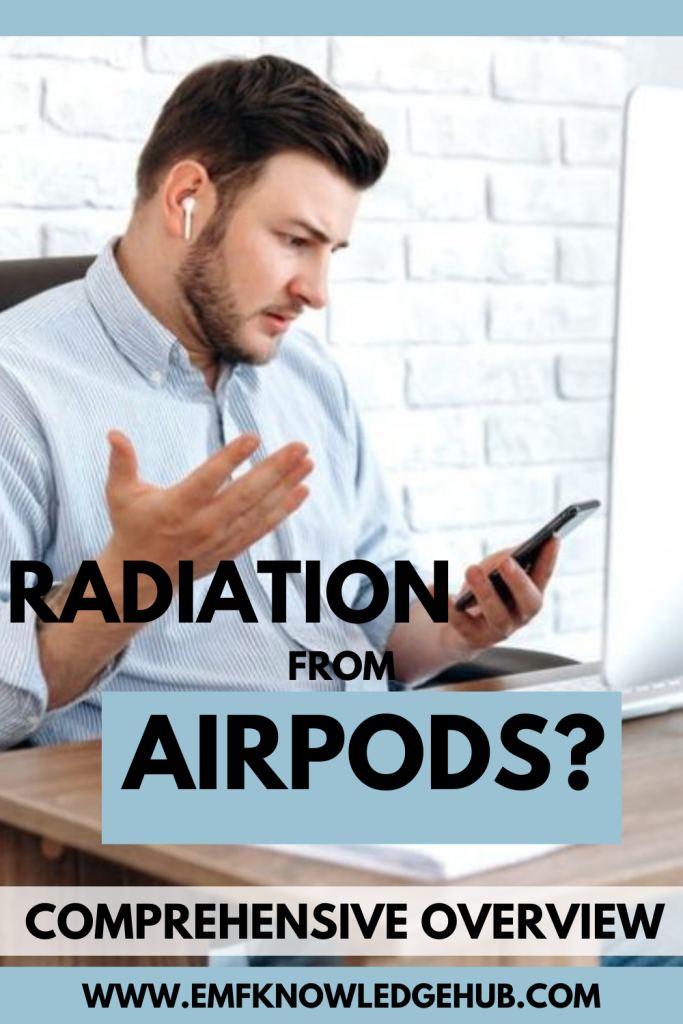AirPods Radiation: A Comprehensive Overview
*We may earn a commission for purchases made using our links. Please see our disclosure to learn more.
In 2019, Apple AirPods brought in $8 billion in revenue for the company. Given such impressive figures, it’s no wonder these earbuds have become a common sight. If you own an iPhone or iPad, chances are you’ve either heard of them or own a pair yourself.
As AirPods have gained popularity, concerns about their safety have emerged. Despite their widespread use, there is limited research on the safety of these devices. In this guide, we will explore how AirPods function, how they differ from other wireless headsets, and the potential health risks associated with their use. We will also discuss some strategies for staying safe.
How do AirPods work?
Each AirPod functions as an individual Bluetooth receiver. Unlike other wireless headsets, each AirPod maintains its own connection with a base device, with no wire linking the two earbuds. The AirPods are stored in a case that also serves as a battery, charging them when not in use. In fact, users charge the case itself, not the AirPods.
AirPods allow users to skip songs, adjust volume, answer calls, and more.
AirPods and radiation
AirPods emit Bluetooth signals with a frequency generally between 2.4 and 2.48GHz, placing them on the RF-EMF side of the electromagnetic spectrum. Each earbud generates its own signal, resulting in RF-EMF radiation from both earbuds.
Bluetooth and other RF-EMF radiation sources have been linked to various health risks, which we will discuss shortly. But first, let’s examine a video that further demonstrates the EMF radiation produced by AirPods.
What about Airpods Radiation? Are AirPods dangerous?
EMF radiation exposure is strongly dependent on proximity—the closer you are to an EMF-emitting device, the more radiation you experience. As you move away from the source, exposure levels decrease exponentially.
This fact highlights the potential issue with placing AirPods in your ears… proximity could lead to dangers from airpods radiation. When using these devices, you expose your brain to RF-EMF radiation. While occasional use may not be problematic, many people wear AirPods throughout the day. Their convenience makes them easy to forget until you receive a call, but this very feature may also render them hazardous.
Existing safety regulations for wireless devices are considered insufficient by many, as they do not account for cumulative exposure. A single device may not be cause for concern, but daily exposure to numerous devices can push our exposure levels beyond safe limits.
In 2019, a group of over 200 scientists from around the world submitted a letter to the World Health Organization (WHO) urging stricter regulations for wireless devices, including AirPods. The WHO currently classifies RF-EMF radiation as “possibly carcinogenic to humans” due to research suggesting it causes heart and brain tumors in mice.
AirPod radiation, specifically, may increase the risk of glioma, a rare and deadly form of brain cancer, due to the device’s proximity to the brain. Children could face even higher risks, as their skulls are thinner than adults’. Besides brain cancer, RF-EMF radiation has been associated with miscarriages in pregnant women and sperm motility and mobility issues in men. Although AirPods have not been directly linked to these conditions, it does not necessarily mean there is no connection—they simply have not been studied.
Protecting yourself
Now that we understand the health risks of AirPods, let’s examine some ways to protect yourself from airpods radiation.
- Limit your exposure. Avoid wearing AirPods all day. If you must use them, only wear them while making calls or listening to music, and limit your usage time. Brief calls are acceptable, but extended conversations are not recommended.
- Use safer alternatives. Until more research is conducted on AirPods, opting for safer alternatives is advisable. Wired headsets are a better choice, as they generate significantly less EMF radiation than their wireless counterparts. The goal is to maximize the distance between you and your phone without increasing radiation exposure. For a list of the best wired headsets available today, refer to our guide on the top ten air tube headsets of 2022.
- Take supplements. Supplements can help protect your body from the harmful effects of EMF radiation by restoring cells and shielding the body. We won’t delve too deeply into supplements here, as our guide to anti-radiation herbs and supplements covers the topic extensively. However, Reishi, Turkey Tail, Ginseng, and several other popular supplements are excellent options. Each supplement has different benefits and effects on your body, so consult your doctor before adding a new supplement to your routine.
- Reduce your exposure elsewhere. If you can’t part with your AirPods, try reducing your exposure in other areas. This can entail switching from wireless to wired internet, eliminating WiFi from your home, installing a smart meter guard to shield against smart meter radiation, switching to incandescent light bulbs, investing in a protective bed canopy, or using a protective pad for your laptop. Any of these steps will help lower your home’s EMF radiation levels, ultimately reducing your risk of negative health effects.
Final thoughts
While AirPods may be popular, popularity doesn’t guarantee safety. If you own a pair, take precautions to decrease the likelihood of experiencing adverse health effects. If you’re considering buying some, you might want to choose a reliable wired headset instead.





